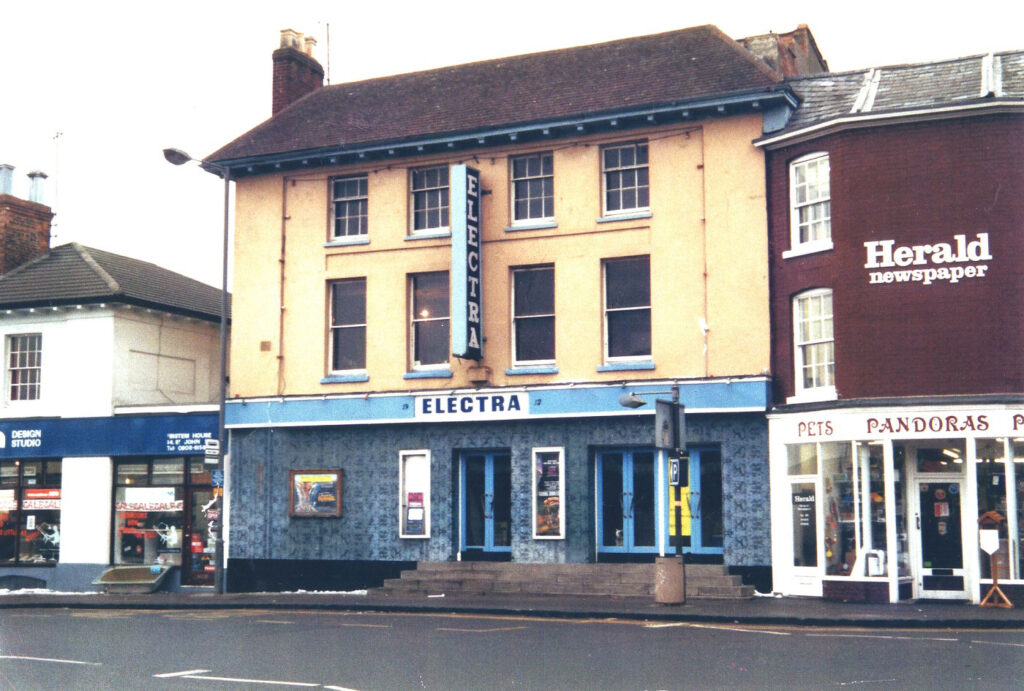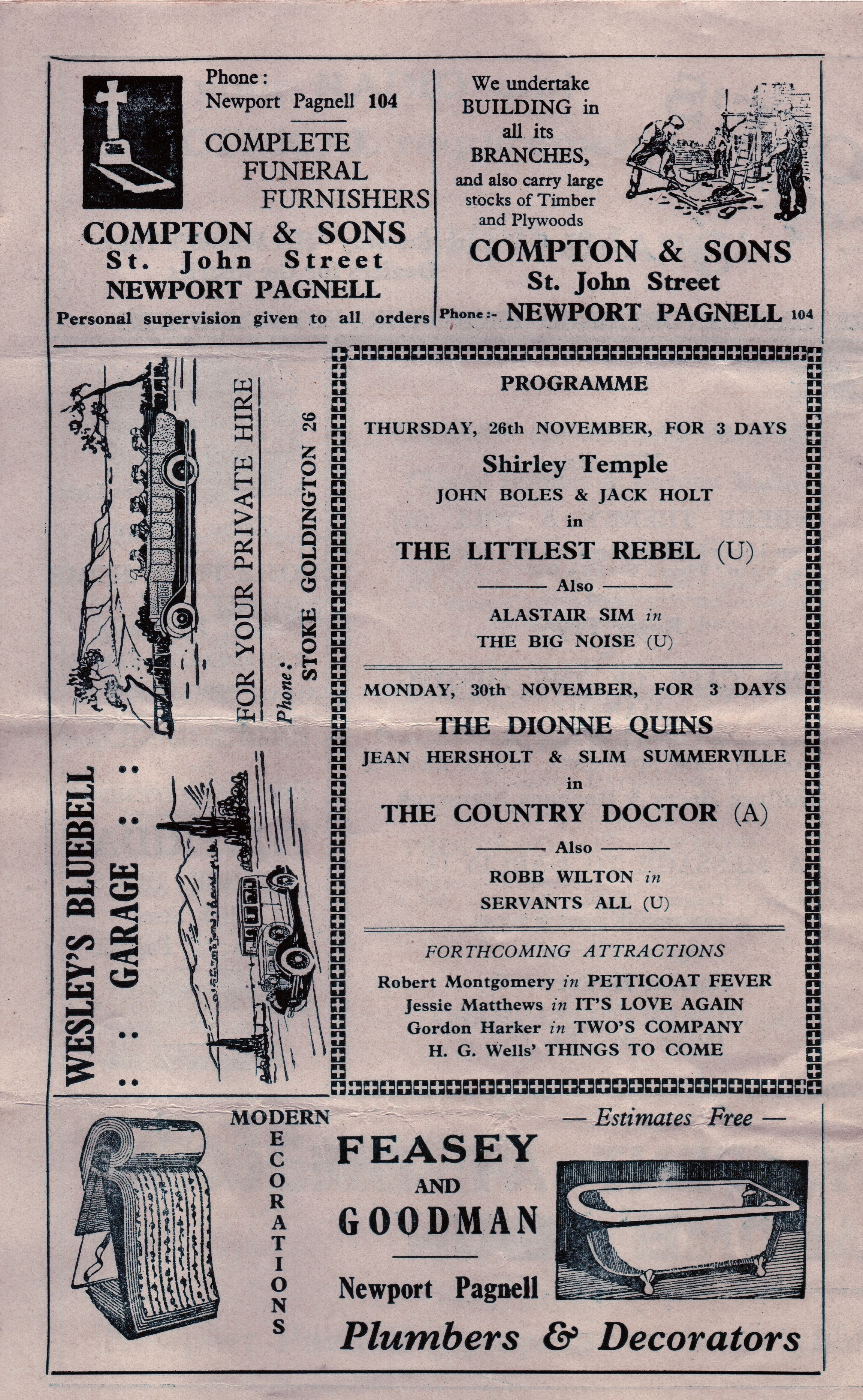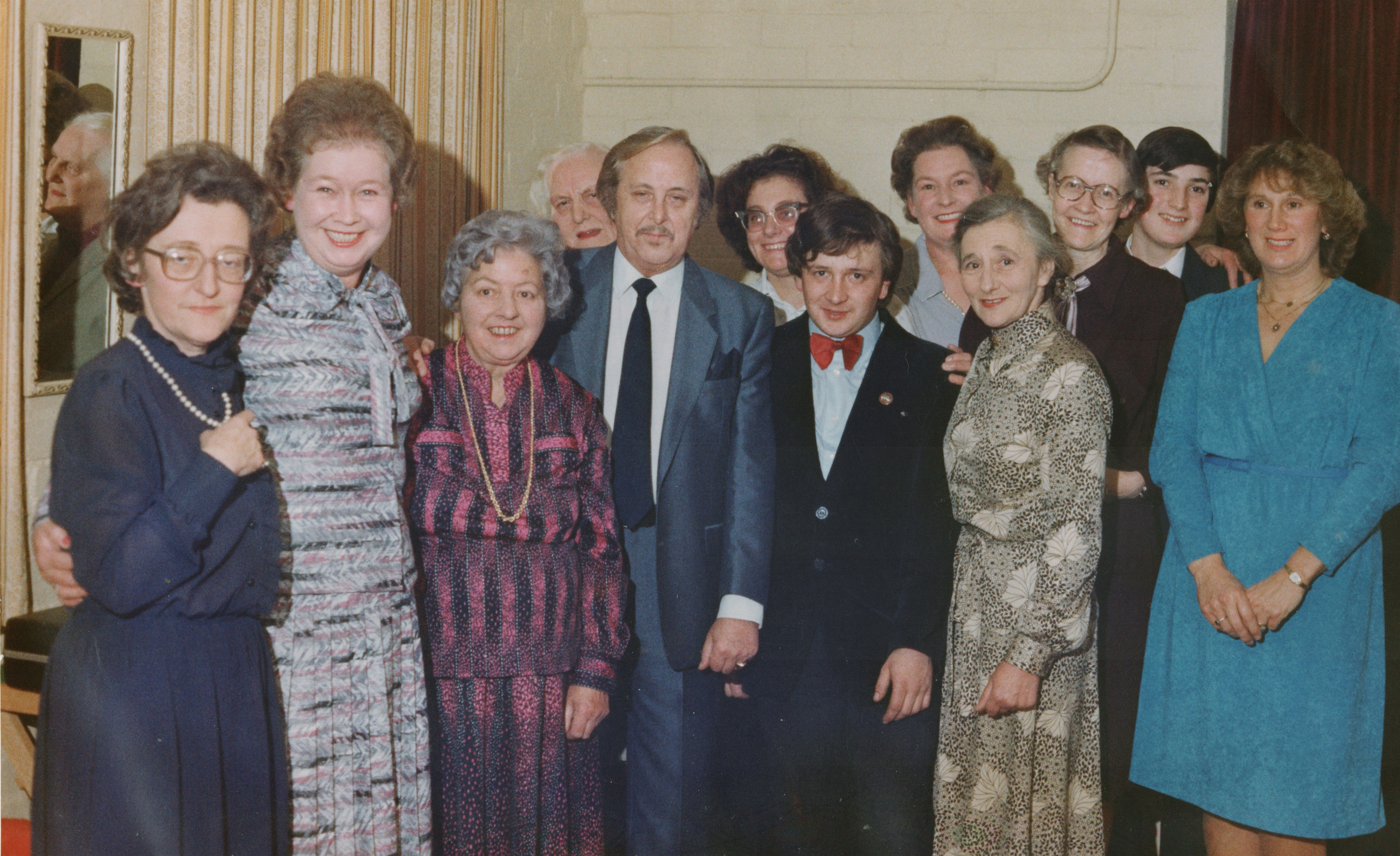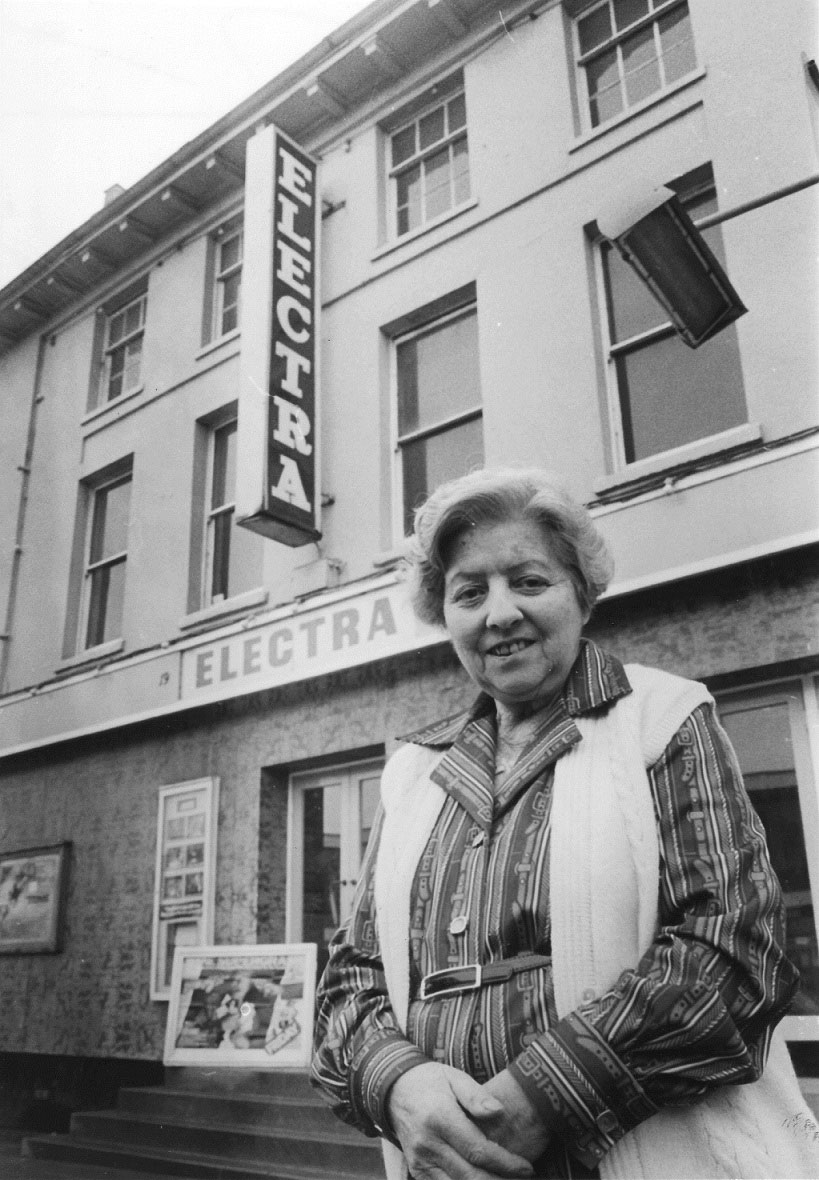Electra Theatre, Newport Pagnell
Posted 8th September 2019
Once alive with excited cinema audiences and the rustle of sweetie wrappers, the Electra Theatre in Newport Pagnell brought the local community together and holds many memories for those old enough to remember…
A trip to the cinema is still a treat today, but imagine the excitement of checking in a century ago – long before the invention of televisions, and mobile phones, and when the nearest thing you had to Instagram was a picture postcard and snail mail.

In those days, a trip to see a film was to be savoured, and in Newport Pagnell, the Electra Theatre stood proud.
It didn’t just bring the community together though, it was definitely responsible for at least one wedding – that of Cyril and Alice Jones, who enjoyed their first date in front of the big screen in 1918.
Cyril had just spent 12 months as a PoW in Germany when he met Alice.
“Cyril and I first met in the street in Newport Pagnell. We got talking and he asked me to go to the Electra with him that night,” recalled Alice in 1979 – when the couple celebrated their Diamond Wedding Anniversary.
The film they watched was a silent movie called Alf’s Button, a sort of ‘genie of the lamp’ story, one of thousands shown during the cinemas’ long history.
The cinema opened its doors at the end of 1912, courtesy of Lucas Salmons, who owned Salmons Coachworks – which is now the Aston Martin works.
Lucas opened the premises for his employees and their families to use.
The Electra thrived, and as time moved on, generation after another enjoyed their visits to the substantial building, which had a seating for almost 600 film fans.
A programme from November 1936 carried advertisements for local store I. Cheal; ‘Before going to the show don’t forget your confectionary and cigarettes,’ it called out, enticingly, and if you wanted to look the part, a trip to Millard’s was in order for the ladies – the hairdresser boasted permanent waving as its speciality.
And the films showing that month? Jack Buchanan starred in When Knights Were Bold, and Shirley Temple topped the billing in The Littlest Rebel.
The Electra Theatre was renamed the Electra Cinema in the late 1930s, and the films continued to wow local folks.
Sylvia Williams worked as an usherette at the cinema from the early 1960s, and loved her time with the flashlight!

“We used to have coaches of people come in from the villages, and it was great meeting people and being around the buzz of it all,” she said.
Then, as now, some children were unruly: “One little kid used to come from the village and was naughty every single week,” Sylvia remembered.
“One week he spat in my face! We used to have some badly behaved children – I threw one or two out!” she laughed.
Aside from the downstairs seating area, the Electra boasted a balcony, “Although we were always told it was unsafe to use,” she recalled, “So there were only two or three seats up there. Up a few steps further was the projectionist.”
Back then Margaret Salmons (Lucas’ daughter) had the business reins, and although she had a cute cottage in Moulsoe, she made herself at home above the cinema too, with a living room space upstairs.

“The acoustics were fabulous,” Sylvia said, “The Syd Lawrence Orchestra performed there twice, and they were brilliant, people came from all over to watch them.”
Sylvia worked Monday to Saturday evenings at the Electra and still remembers her time there fondly, with the exception of that spitting lad!
“It was a good life and I really did enjoy it there…”
In the 1950s Nick Jones made regular trips there with his sister.
“We would go to the Saturday morning pictures, as we called it then. We saw The Bowery Boys, Flash Gordon and various Cowboy films.
“I remember the deep velvet seats, and queuing up for an ice cream in-between pictures.”
Then, as now, the back row of the cinema was bagged by courting couples!
The cinema was a focal point for teenagers, each with their own memories to savour; From those exuberant youngsters told to stop dancing in the aisles by the local policeman (Rock Around the Clock was responsible!) to watching latter day big screen hits like Lady & The Tramp, Gremlins and The Goonies.
And nothing was better than a trip to the cinema on a Saturday morning – who doesn’t remember the Pearl & Dean adverts? And the little sweetie shop close-by where 10p would get you a bag full of sugary fun?
Whether it was silent movies of the early 20th century, or the big screen blockbusters from the 1980s, the lure of The Electra remained strong for more than 70 years.
But times were changing.
As the new town of Milton Keynes was born, and then expanded, plans for The Point were announced.
The £7.5 million complex opened its doors on November 29, 1985, and was Europe’s first fully-integrated entertainment venue. Footfall switched to CMK, and the Electra’s days were sadly numbered.
For a time bands replaced films, and music fans gave the building a small reprieve under the guise of Harry Maloney, who employed Jim Price to oversee things.
Jim said: “Harry asked me to run it while he worked out what to do with it. We couldn’t make any money as a mainstream cinema. I nicked an idea from my youth in Glasgow – I used to go to a cinema which ran all night B-movies.
“I started running all night Friday and Saturday black & white horror movies. The place was packed! Especially when we put out the story about the ghost…
“We had to remove the front six rows of seats from the Electra for the live band audience and then bolt them back down for the next night’s cinema goers. In the days before electric screwdrivers…”
By January 1987, the building was on the market for £150,000, with planning granted for the redevelopment of the space for retail or residential purposes. Soon, the cinema showed its last film and the curtains closed for the last time.
Lee Scriven had campaigned to save the building. “The closure of the Electra was for me personally one of the saddest days in the city’s cultural history,” he said. “The potential for the venue was huge. With funding it could have easily been transformed into a fantastic ‘art’ cinema that are so popular in this present day and also become a multi-arts centre. It was a massive opportunity missed.”
The area that used to hum with excited cinema audiences and the rustle of sweetie wrappers, is now called Tickford Arcade, and home to a cafe, tattoo parlour and a card shop.
The cinema is long gone, but ask anyone who used to frequent the entertainment hub for their memories and their faces will light up with fond reminiscences – just as they used to do when the lights would dim and the latest movie would begin rolling.
